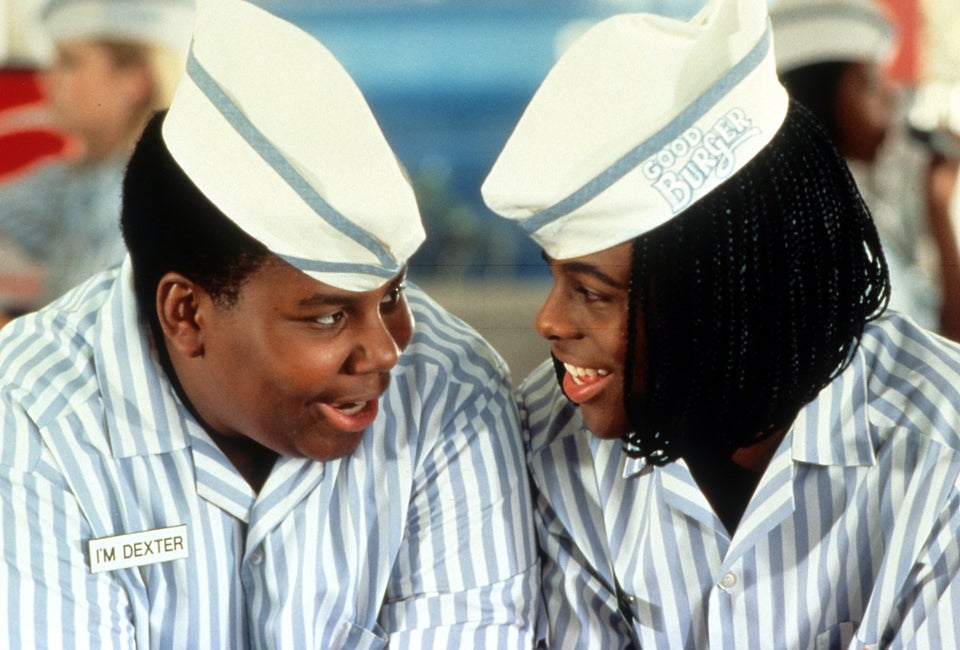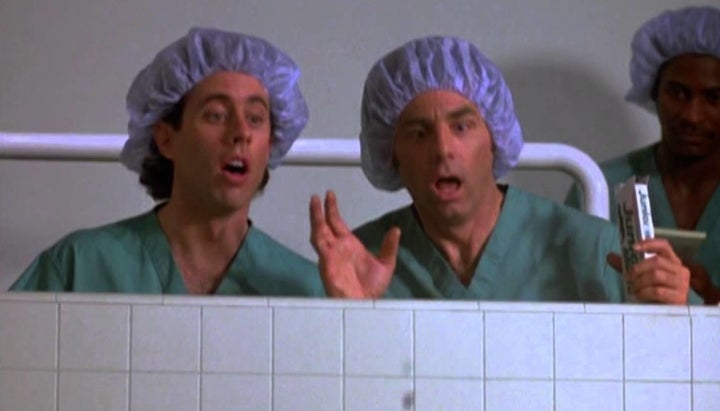
"I thought people were going to crucify me for killing this show that they love with these bizarre storylines that had no basis in reality," said Andrew Robin, who wrote the script for the now iconic "Seinfeld" episode, "The Junior Mint."
The episode was Robin's first-ever sitcom script (for any show) and he was convinced it would be the death knell for both him and comedian Jerry Seinfeld's series.
The basic premise of this episode isn't actually too out there. Basically, an ex-boyfriend of the character Elaine (Julia Louis-Dreyfus) is in the hospital to have a spleen removed and she visits him along with her friends.
Robin introduces the main absurdity when Jerry (Jerry Seinfeld) and his friend Kramer (Michael Richards) actually attend the operation and then accidentally drop a Junior Mint into the patient's body. Somehow nobody else notices, including the doctors. Jerry and Kramer both presume they killed the ex with a Junior Mint. Then, in a twist of fate, the episode ends with the man's doctor admitting it seemed as if his patient may die, but instead "something beyond science, something perhaps ... from above," saved his life.
Despite the show only being a half-hour sitcom, that's somehow not the end of the now notorious ridiculousness of this episode. Other side plotlines include their friend George (Jason Alexander) buying thousands of dollars worth of the ex-boyfriend's strange triangle art, presuming the value would go up post-death. Another involves Jerry forgetting his new girlfriend's name, then after discovering it rhymes with a body part of the female anatomy, him and George spend the episode trying to guess it. (Her name ends up being Dolores). Amid all of this, Kramer tries to transform his apartment into a ski lodge.
Still, the episode is definitively a classic and Robin, as of yet, remains unscathed. Just this weekend, The New Yorker Radio Hour podcast released an interview with "Seinfeld" co-creator Larry David, during which they played him a clip from "The Junior Mint" as a highlight of the show.
The Huffington Post spoke with both the original script writer, Robin, as well as Patti Ganguzza, president of AIM Productions, Inc., who the show contracted for all nine seasons to manage and provide clearances for the numerous moments of product placement. A "Seinfeld" superfan, Twitter user @Seinfeld2000 (who wrote a brilliant novella imagining the series taking place in contemporary times), provided further context into the chocolatey mintcident.
What follows is a history into arguably one of the strangest, but most beloved TV episodes in pop culture.
The item Jerry and Kramer dropped in the body wasn't originally going to be a Junior Mint.
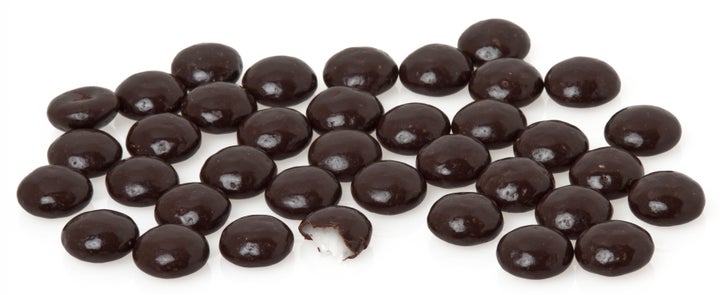
In the script, Robin had Kramer treating the surgery like an outing to the movies. Besides Kramer insisting on a no-spoilers policy leading up to the operation, the character decides he should bring a classic movie treat to eat during the surgery. This ended up being Junior Mints, but that's not how Robin originally wrote the scene.
"I was thinking he would bring popcorn into the operating stands to enjoy the experience even more," said Robin. This plan didn't end up lasting past an initial outline. The writer ran the idea by his brother, who made the Junior Mints suggestion. Why? "Because Junior Mints are just funnier."
Robin further explained, "Junior Mints are one of those things you just kind of only see in movie theaters" adding that the "odd name" aided the joke.
"Seinfeld" reached out to candy companies other than Junior Mints to seek approval, just in case.
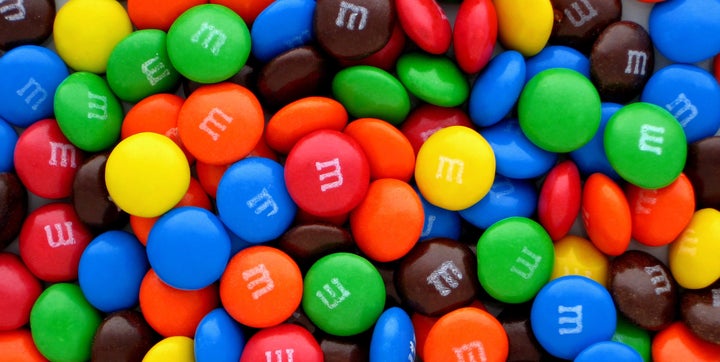
Other perennial sources of television trivia have claimed that "Seinfeld" only went with Junior Mints for this episode because M&Ms and Life Savers turned the show down. Despite the pervasiveness of this trivia, it's not exactly true.
"It was always Junior Mints," said Ganguzza. However, at the time she needed to secure approval, Thanksgiving was fast approaching and it was unclear whether the Junior Mints brand would approve the request by the show's shooting deadline. Ganguzza added, "I had little time to get Andrew [Robin]’s scripting of Junior Mints cleared through corporate channels."
So to hedge bets, Ganguzza reached out to M&Ms and Life Savers as backups. As always with the show, "no brands paid for exposure, because every brand placement had a purpose in the storyline," explained Ganguzza.
Life Savers passed because "it was improper use of product. :)," said Ganguzza over email. "M&Ms was ready and willing so they signed the clearance and product was sent to production." But Ganguzza had happened to meet with the ownership behind Juniors Mints at the time, Warner-Lamber, just about a week before this request on separate business. So despite the tight time window, in the end, Ganguzza was able to secure the originally planned Junior Mints.
"For their cooperation, M&Ms was included in Jerry’s stand-up routine at the end of this episode," added Ganguzza. In the bit, Jerry waxes about how only 7-year-olds can tell the difference in taste between various M&Ms colors.
In 2002, for what it's worth, The New York Times did quote Ganguzza as having said, "I pitched [an opportunity for product placement] to three different candy companies, and said, basically, 'The first to jump on this gets into '"Seinfeld.'" Shortly after, The Times published a response from Robin, where he said, "As the writer of the 'Junior Mints' episode of 'Seinfeld,' I can say with authority that Patti Ganguzza did not 'place' Junior Mints in the script," before explaining the story about his brother.
Robin told HuffPost that, "Patti Ganguzza worked really hard for the 'Seinfeld' show and was an important part of its success," adding she "did a nice job of smoothing the waters and reassuring companies that were for whatever reason reluctant that it would be a good idea for us to use them."
Junior Mints representatives initially had reservations about their candy falling into an open body during surgery.
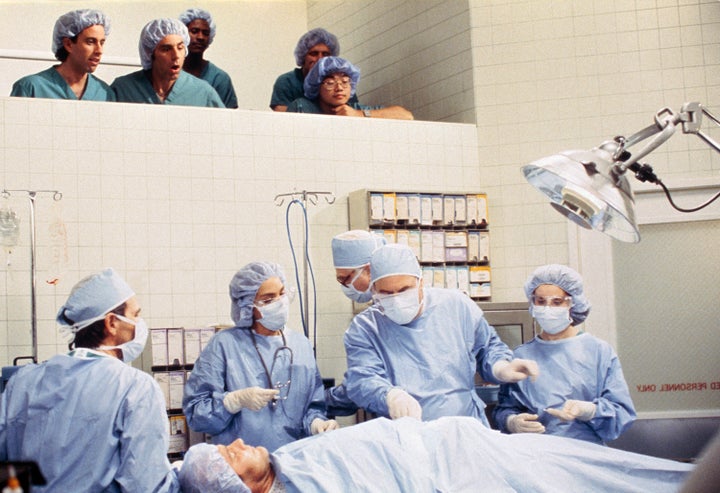
On top of the time challenge, Ganguzza also had the task of trying to convince the company behind Junior Mints that it wouldn't hurt their brand if their product fell into an open body on an operation table.
"As much as brands love placement, brand directors are very protective over their brands and need to consider the impact it may have on the consumer," explained Ganguzza. "With Seinfeld, I kept reminding decision makers, it’s a comedy!"
In the particular case of Junior Mints, Warner-Lambert was in the process of selling the brand and, as Ganguzza put it, the company was worried that the candy falling into the patient might have negative repercussions.
Concerns from the Junior Mints company caused an important line to change.

After Robin turned in a final script, the show writers added a few tweaks. Among these changes was an exchange between Kramer and Jerry in which Kramer says, "Who's gonna turn down a Junior Mint? It's chocolate, it's peppermint, it's delicious." Jerry responds, "That's true," to which Kramer adds, "It's very refreshing."
Robin didn't know the origin of where these came from and claimed, "I love those lines, they really make me laugh, but they weren't mine."
Later on in the episode, a doctor reiterates Kramer's claim, and says in reference to the candy, "Those can be very refreshing."
According to Ganguzza, that final line is how Junior Mints agreed to the product placement. The company had approved Robin's script "verbatim" but had "one copy tweak," as Ganguzza explained.
Ganguzza said she had nothing to do with the initial scene in which Kramer hypes up the candy -- presumably it came from another show writer, if not Robin. But the original script didn't call for the doctor to claim Junior Mints are refreshing. When Kramer offers him a Junior Mint at the end of the episode, he would have instead said, "No thanks. That stuff will kill you."
"I communicated to production that the brand would not approve unless they did something about that line," said Ganguzza. So, the doctor recommends the candy.
The writer thought that the medical inaccuracies were so ridiculous that his episode would ruin the show.
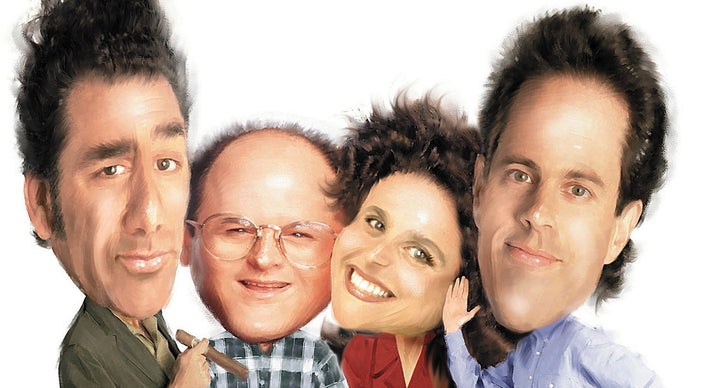
"The script is kind of bizarre," Robin said of his work. "You've got the unsterile operating room. A Junior Mint flying into somebody's abdomen," he continued, laughing. "You've got this weird triangle art."
The premise of Kramer and Jerry watching the operation particularly worried Robin.
"It just suddenly dawned on me that this isn't the 1890s," he said. "There's going to be some sterility. It's going to be a very controlled environment. And how is somebody going to sneak Junior Mints in." Robin concluded that the premise was "totally impossible," but the rest of the "Seinfeld" staff didn't seem to agree.
"It's a weird sort of skill that Larry [David] and Jerry [Seinfeld] have, determining how much implausibility can get in the way of the comedy," explained Robin. "They're so funny that you can smooth over just about any implausibility."
In any case, Robin still "thought this was going to be a big flop," and had "no confidence in the episode" until after it aired.
The episode is so beloved, in fact, that in 2014, "Seinfeld" fans released a video game where you can try and purposely drop Junior Mints into the patient.
Robin isn't alone in his belief that the Junior Mint scene is insane, even for "Seinfeld." Popular Twitter persona @Seinfeld2000 -- a fan account that is loosely centered around imagining what life would be like if "Seinfeld" was still around, but posits even more ridiculous situations than Robin's -- created a video game dedicated solely to the moment's iconic bizarreness.
"It's the absurdity of the situation combined with the obscurity of the type of candy, and then the focus and repetition of the Junior Mint as a callback throughout the episode," said @Seinfeld2000 as to what inspired him about Robin's episode. "Very 'Seinfeld.'"
After teaming up with video game designer Pippin Barr, the duo set out to make "an already ridiculous story even more insane," @Seinfeld2000 said. The premise of this Internet-based game is to purposefully drop Junior Mints into the patient's body while avoiding various obstacles that try to get in your way, such as Miley Cyrus riding a wrecking ball (this was 2014).
The Twitter user also convinced fellow "Seinfeld" fan and avid Twitter user Ezra Koenig -- who fronts the band Vampire Weekend -- to hum the "Seinfeld" theme in the background of game play. This game may be a masterpiece that was discussed in a New York Times profile, but @Seinfeld2000 still isn't satisfied.
"If anyone from NBC and/or Jerry Seinfeld's team is reading this, it would be great if you could put 'Seinfeld' back on TV with brand new episodes," @Seinfeld2000 told HuffPost over email. "I'd love to see how Jerry deals with Kramer borrowing his iPad or how George would operate in the world of online dating. Please, this is something I really need and I'm not sure if I will ever be truly satisfied in life until it's something I get."
Robin may have thought "The Junior Mint" would kill "Seinfeld" and his own career, but instead fans continue to obsess over both the show and this particular episode.
With its bizarre premise, "The Junior Mint" taught us that candy could save a life. Perhaps Seinfeld2000's game already proved the show is still alive, at least in some junior way.


